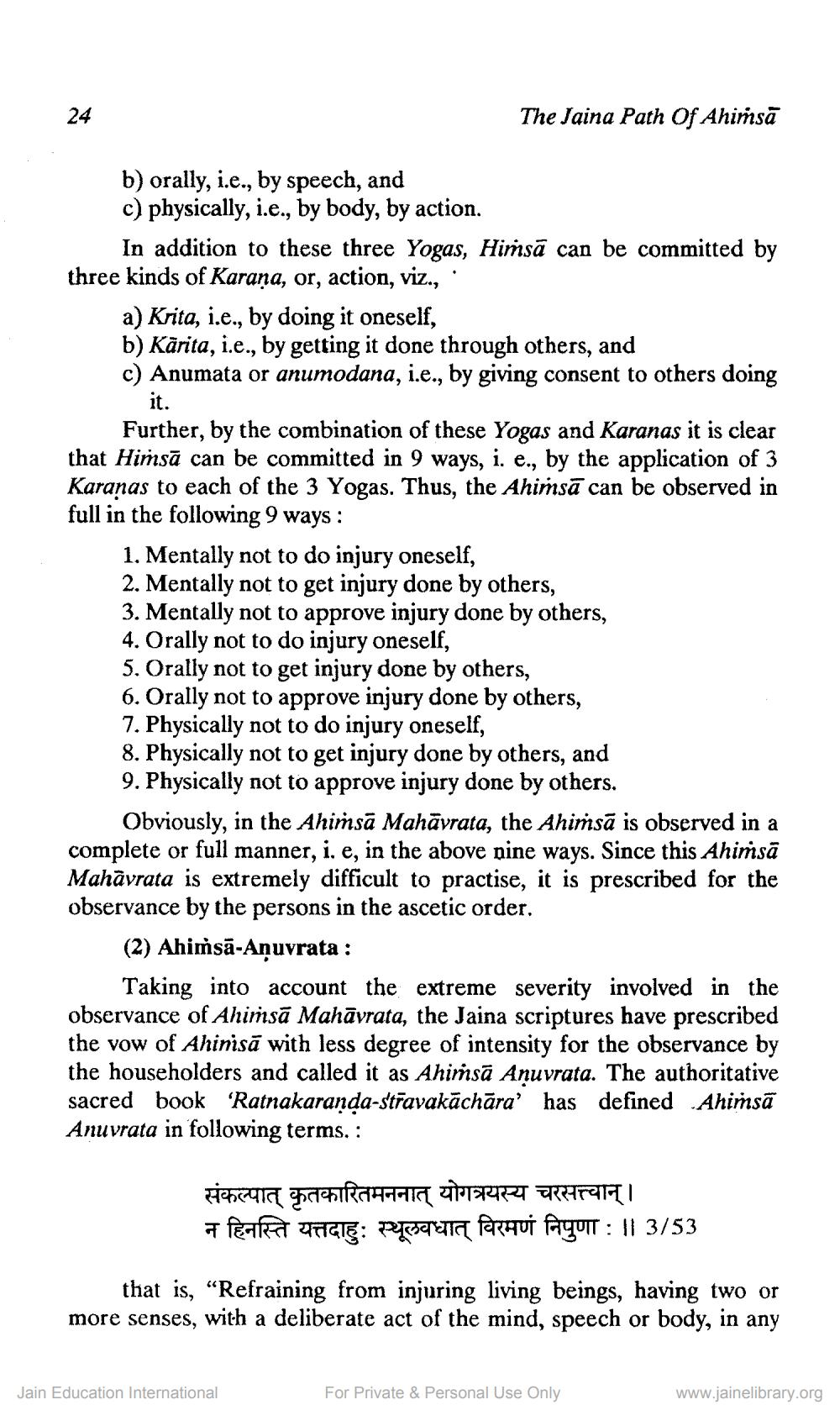________________
24
The Jaina Path Of Ahiṁsā
b) orally, i.e., by speech, and c) physically, i.e., by body, by action.
In addition to these three Yogas, Himsā can be committed by three kinds of Karaṇa, or, action, viz.,
a) Krita, i.e., by doing it oneself, b) Kārita, i.e., by getting it done through others, and c) Anumata or anumodana, i.e., by giving consent to others doing
it.
Further, by the combination of these Yogas and Karanas it is clear that Hiṁsā can be committed in 9 ways, i. e., by the application of 3 Karanas to each of the 3 Yogas. Thus, the Ahiṁsā can be observed in full in the following 9 ways:
1. Mentally not to do injury oneself, 2. Mentally not to get injury done by others, 3. Mentally not to approve injury done by others, 4. Orally not to do injury oneself, 5. Orally not to get injury done by others, 6. Orally not to approve injury done by others, 7. Physically not to do injury oneself, 8. Physically not to get injury done by others, and 9. Physically not to approve injury done by others.
Obviously, in the Ahiṁsā Mahāvrata, the Ahiṁsā is observed in a complete or full manner, i. e, in the above nine ways. Since this Ahimsā Mahāvrata is extremely difficult to practise, it is prescribed for the observance by the persons in the ascetic order.
(2) Ahimsā-Aņuvrata :
Taking into account the extreme severity involved in the observance of Ahimsā Mahāvrata, the Jaina scriptures have prescribed the vow of Ahinisā with less degree of intensity for the observance by the householders and called it as Ahiṁsā Anuvrata. The authoritative sacred book 'Ratnakaranda-stravakāchāra' has defined Ahimsā Anuvrata in following terms. :
संकल्पात् कृतकारितमननात् योगत्रयस्य चरसत्त्वान्। a fear UTIGE: PESCUIT forstui Pangult: 11 3/53
that is, “Refraining from injuring living beings, having two or more senses, with a deliberate act of the mind, speech or body, in any
Jain Education International
For Private & Personal Use Only
www.jainelibrary.org




